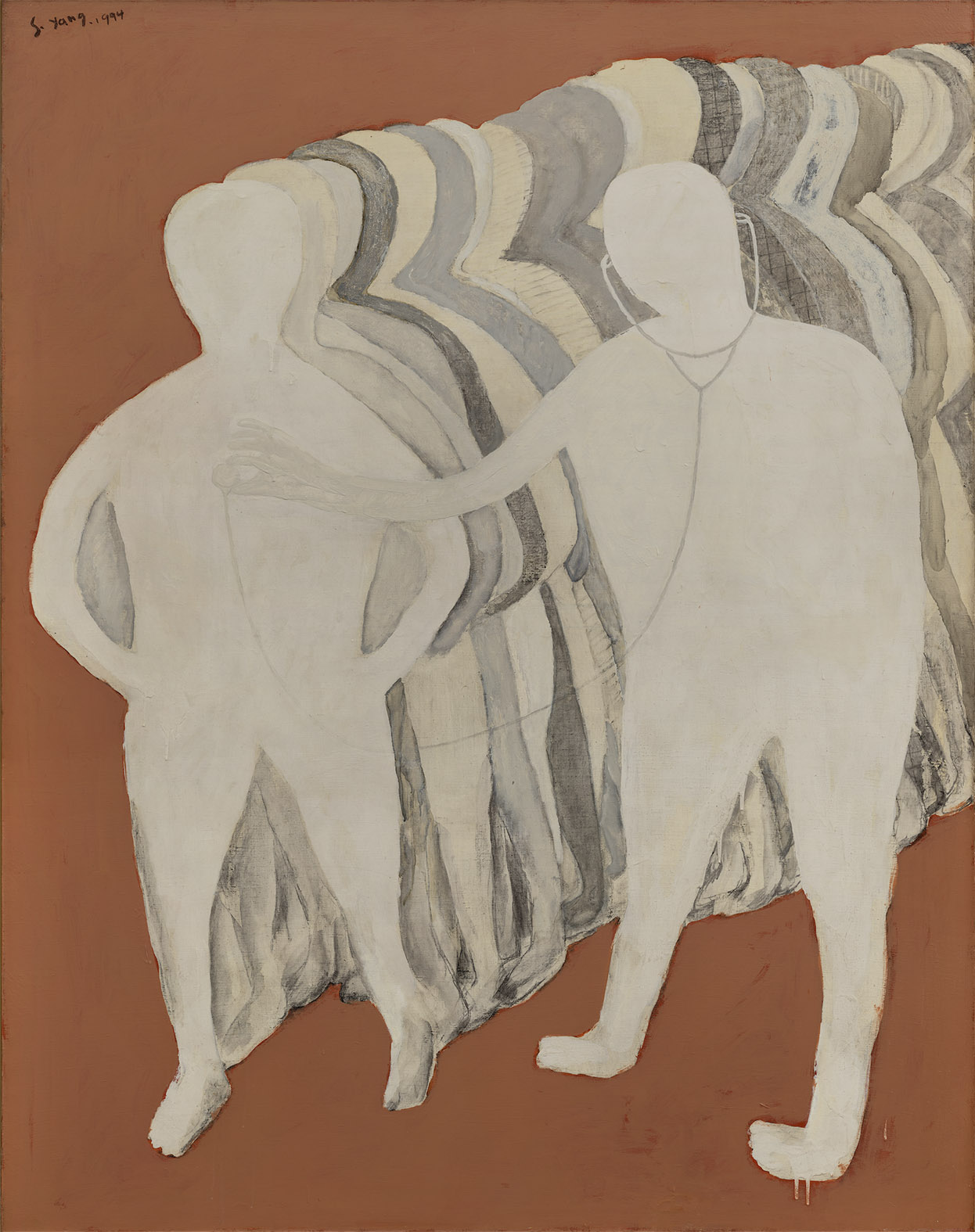
Shang Yang
Diagnosis – 6
1994
Oil on canvas
In 1994, Shang Yang was hospitalized due to a heart disease. During this hospitalization period, he really realized what a crisis was. He was aware that people have a chance to closely contact with the Reductionism of modern science only in the state of being hospitalized. In particular, when they take medical check-up, they are constantly required to do what doctors ask. This phenomenon quite coincides with the status quo of contemporary culture as the judgement people make is often biased. Therefore, he decided to use the word “diagnosis” to summarize his understanding of living and life.
Diagnosis – 6 depicts a world in a patient’s eyes. The hospital is very queer space, replaced by a background in orange. Patients are standing in line at the corridor, waiting for doctors’ diagnosis. They don’t present specific figures and appearances, but are replaced by white, light yellow and gray blocks. The painter abandoned expressive and symbolic elements and visually presented “people’s conditions” with the help of the simple symbol of human body – a straightforward and rational language. Patients’ cognition to the society and other people seemingly becomes numb, instead they only care about their own diseases. Every day, they enter in different zones on time to take diagnosis in line with their prescriptions.
In the consciousness of patients, things and events to which they have not paid attention will emerge, and have a subtle correlation, firstly among things and events, then with “me”. Patients divide the inner and outer world, “I” and “They” with their bodies as the boundary, and establish an object relationship between the two. The Diagnosis series directly hit the theme of “human”, discussed human being itself and the relationship among people and between human and society, while it is body that connects all these abstract concepts. In Shang Yang’s opinion, he, as an artist, has transformed his personal experience into social experience through artistic languages. He not only cares for individual life, but cares more for the prospect of human existence.
(Edited by Li Hanning & Yang Zhige, 2021)

